Sony Xperia 1 IV
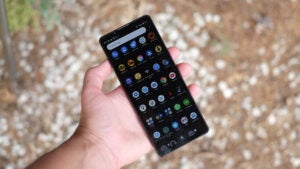

The Sony Xperia 1 IV is a phone that offers benefits that other phones don’t deliver. It says “no” to the notch, “yes” to expandable storage and the headphone jack, and includes an optical zoom camera. However, photo quality doesn’t match the best in most respects, and the device becomes hot all too often, narrowing its appeal significantly.
Pros
- Non pixel-binning camera handles tricky textures well
- Has a headphone jack and expandable memory
- Optical zoom camera is a neat concept
Cons
- Inconsistent camera doesn’t match expectations
- Becomes hot frequently
- Suffers from significant thermal performance throttling
- Very expensive
Availability
- UKRRP: £1299
- USARRP: $1599
- EuropeRRP: €1399
Key Features
- Optical zoom cameraThe Sony Xperia 1 IV has a 3.5-5.2x optical zoom with moving lens elements. It’s ambitious tech for a phone
- 4K displayA 3840 x 1644 panel means the Sony Xperia 1 IV has more pixels than the competition, although the phone typically upscales from 1080p
- Snapdragon 8 Gen 1This phone uses the Snapdragon Gen 1 processor, one of Qualcomm’s best. It’s capable of incredible GPU feats when it isn’t limited by high temperatures
Introduction
The Xperia 1 IV is Sony’s top phone for 2022. It continues the trends set by previous models in this lineup, such as the Xperia 1 III and Xperia 1 II, and it’s very similar to the newer Xperia 1 V too.
This means you get a “4K” screen, an unusual camera array, and photography software intended to feel more like the interface of one of Sony’s Alpha-series mirrorless cameras.
There’s plenty that’s interesting here, with a unique periscope camera the star piece of hardware. It has a “true” optical zoom, meaning the 3.5x to 5.2x range is handled by moving lens elements inside the periscope camera, rather than digitally zooming in and hoping for the best.
Best camera phone ever? Perhaps not. Sony’s software takes some of the fun out of casual photography, and its comprehensive manual control is arguably more useful for video than stills. As with zoom lenses made for “proper” cameras, the sharpness of the variable field of view periscope isn’t nearly as good as that of more conventional prime designs such as that of the Huawei P50 Pro.
In addition, the device often becomes hot, and like many Snapdragon 8 Gen 1 phones, thermal throttling erodes the point of having such a powerful processor. It’s an issue solved by the newer Snapdragon 8 Gen 2 chipset within the Xperai 1 V, which may sway you towards the newer model.
Even at a reduced £880 following the release of the Xperia 1 V, the Sony Xperia 1 IV remains a pricey option, especially given its poor thermal performance. However, it has a bunch of interesting features that haven’t been seen elsewhere, and I’ll take a look at a handful of them in this review.
Design and Screen
- IP68 water-resistance
- Tough Gorilla Glass Victus front and back panels
- Includes a headphone jack and expandable storage
You don’t come to a Sony Xperia phone for design innovation and experimentation. The Sony Xperia 1 IV looks very much like its predecessors (as well as its successor, the Xperia 1 V) and Sony has mined this severe black brick style for what feels like forever.
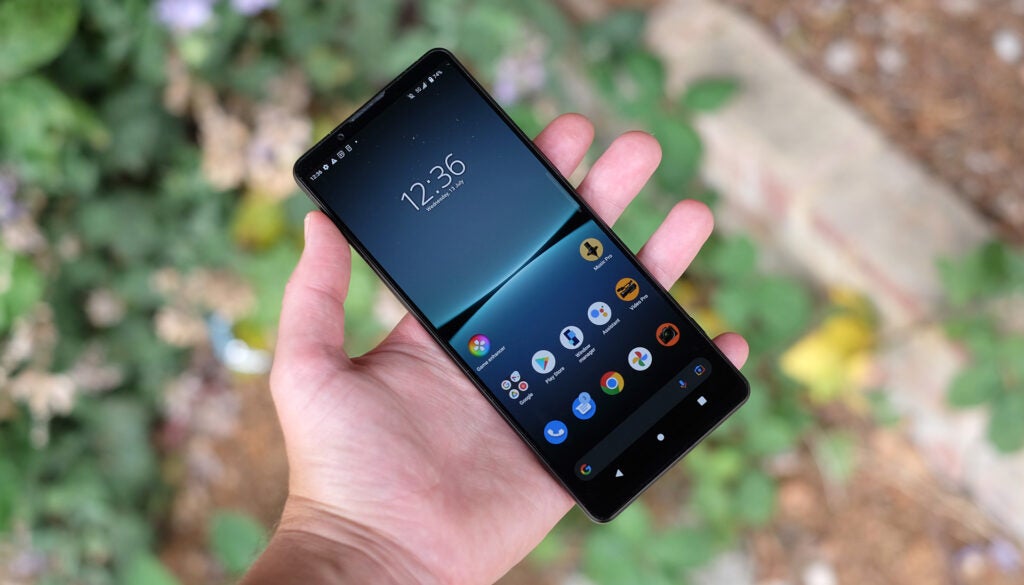
However, it’s still distinctive among rivals. Some might even call it “iconic”.
The Sony Xperia 1 IV’s back is a flat piece of matte glass, and a bevelled border of aluminium sits between this rear glass and the front panel of Gorilla Glass.
Both bits of glass are Gorilla Glass Victus – the best you can get in a phone. And unlike some earlier versions of matte glass, the rear of this device doesn’t pick up fingerprint marks too readily.
This is an unmistakably “Sony” design, one that may seem sophisticated and elegant next to try-hard flagships such as the Oppo Find X5 Pro.
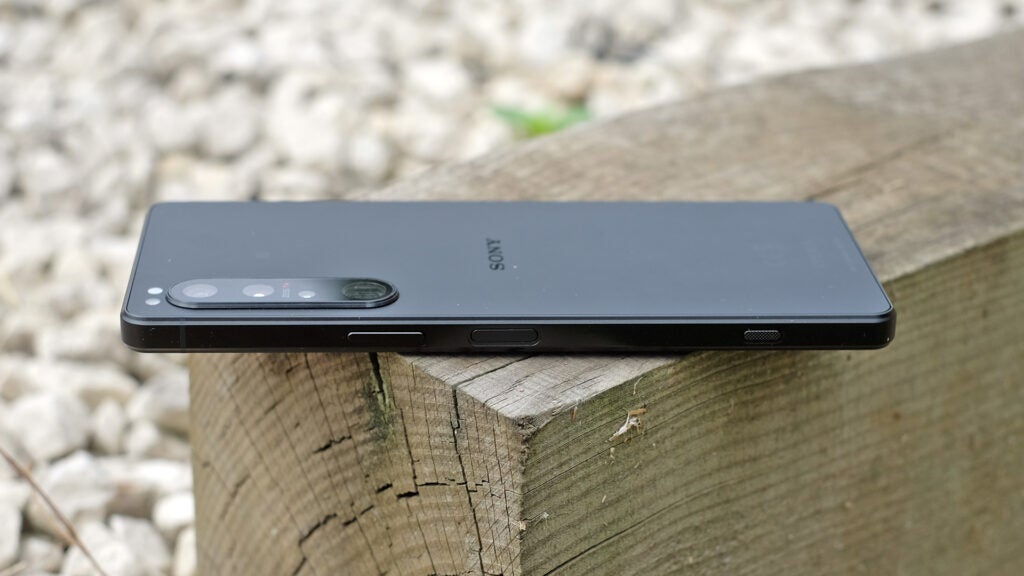
As in previous years, there’s no display notch. And the shape of the screen results in a very elongated form. The Sony Xperia 1 IV is only 71mm wide, which makes it unusually easily to handle for a phone with straight-cut sides.
This phone also has a 3.5mm headphone jack, bucking the trend other manufacturers have been so quick to follow. Despite this, the Sony Xperia 1 IV still offers IP65/68 water-resistance. No-one should be surprised by this; Sony was the original master of water-resistant phones a decade ago.
The Sony Xperia 1 IV even has a microSD slot, which sits on the back of the SIM tray. Most won’t need to use a card, since even the base model comes with 256GB of storage, but the flexibility is welcome. You could call this an “old school” approach, but this suggests it’s dated in some way; it isn’t. Offering expandable storage is a consumer-friendly move.
The speakers form a standard stereo array – one on the bottom, another above the screen. These offer decent maximum volume but poor bass compared to the best. Sony adds a dynamic vibration feature to compensate, where the vibrate motor buzzes along to the beat to increase the perception of bass when the phone is placed on a flat surface.
I’m sure this had some benefit in previous Sony phones I’ve used, but it doesn’t here. It sounds more like an annoying friend tapping along to a song’s drumbeat; perhaps the Sony Xperia 1 IV’s haptics are just too refined for it to function effectively.
The haptic feedback you get elsewhere is super-precise and snappy, supporting this idea. You can use either face unlock or the side-mounted fingerprint scanner to unlock the Sony Xperia 1 IV. This is another Sony trait: where other manufacturers are big into in-screen fingerprint recognition, Sony sticks with its old style.
Sony isn’t out to converge with all of its competitors at some point in the future, just out of view. That said, I find curved glass a big part of what makes an expensive phone feel expensive. The Sony Xperia 1 IV doesn’t appear “£1299 expensive”, nice as it is.
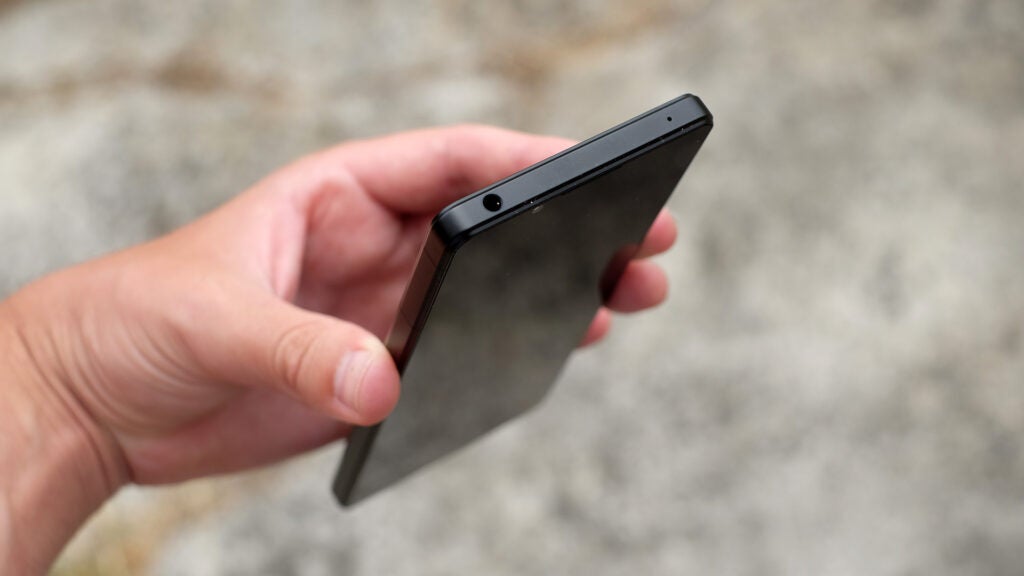
The Sony Xperia 1 IV has a 4K screen. Sony has trotted out such screens since 2015’s Xperia Z5 Premium, and I’ve never really found a compelling use for such high pixel density. The phone’s actual resolution is 3840 x 1644 pixels.
Years ago we had phone VR, which benefitted from all those pixels; but phone VR isn’t really a thing anymore.
Sony tries to prove its worth by using super-small fonts in the Sony Xperia 1 IV as standard. The silly thing is the Sony Xperia 1 IV doesn’t actually render its interface at 4K most of the time, instead upscaling from 1080p – apart from in select apps.
If you have a hint of long-sightedness then you’ll need to bump up the text size. And, unfortunately, this spoils the “cool” look of the interface.
Display quality is excellent. This is an OLED screen with a 120Hz refresh rate, great maximum brightness and well-calibrated colour.
The Creator display mode has the warm-looking colour tone you’d see in the “pro calibrated” modes of a Sony TV, while Standard mode is on hand for those who prefer a cooler tone and higher saturation. It can appear to have more pop, more punch; but Creator mode is technically superior.
Performance
- Has Android 12 and keeps its interface updates
- Uses an app drawer with folders
- The SoC is powerful but suffers from a lot of heat-related throttling
The Sony Xperia 1 IV initially ran Android 12 out of the box, though it received the update to Android 13 in April 2023. It’s essentially a stock version of Android, though with a few custom Sony tweaks on top.
There’s one distinct Sony change in the interface. The Sony Xperia 1 IV’s app menu supports folders, for better organisation of your app library. This also helps to half-hide some of the rubbish Sony has installed on the phone.
It includes LinkedIn, Booking.com, a couple of Amazon apps and Tidal. While these aren’t useless apps, when third-party apps are preinstalled unasked for, they’re ads of a kind. Ads in a phone that costs this much? Not ideal.
Still, it isn’t worth getting upset about; you can delete them. The phone also has Bravia Core preinstalled, a video streaming app made for this phone and select Bravia TVs. You can stream a selection of Sony Pictures movies freely (12 months of access is included), and appear to get five “credits” to unlock newer titles such as the famously awful Morbius; as well as much better movies such as Sound of Metal, at the time of review.
The Sony Xperia 1 IV is powered by the Snapdragon 8 Gen 1 processor, a super-capable top-end Qualcomm chipset. Benchmark testing shows the awesome raw power of the chipset. It scores 3283 (1141 per core) points in Geekbench 5, and a fantastic 7750 in 3DMark’s Time Spy test, roughly matching other phones with this CPU such as the OnePlus 10 Pro and Xiaomi Poco F4 GT.
However, the more I use phones with this chipset, the less I like it. That peak power doesn’t really give a realistic indication of real-world performance, as a 3DMark stress test indicates.
This 3DMark programme runs a 1-minute test 20 times, and throttling happens almost instantly in the Sony Xperia 1 IV. Its performance stability is just 46.3%, meaning the phone loses more than half of its maximum power over time.
Even the second test, just one minute after the start, sees a drop of roughly 25%. Those Geekbench 5 scores are even more useless here as an actual indicator of performance than they usually are.
The Sony Xperia 1 IV’s worst 3DMark scores are actually lower than those of a Snapdragon 870, which I saw lose virtually none of its power over the same 20-minute test in the rather good Realme GT Neo 3T.
Reasons for performance throttling become obvious when you start using the Sony Xperia 1 IV. It gets hot often, and not only when you play demanding 3D games. On one day, just a minute or so of recording video clips with the camera saw the “high heat” alert pop up, disabling certain features. Downloading stuff while you browse the internet causes significant heat build-up.
This is a hot phone. It’s an issue Sony phones suffered for a while years ago, but this time I blame the Qualcomm SoC more than the specifics of the hardware design.
Gaming, video chat, large file downloads and video recording cause these problems most noticeably. The phone doesn’t run hot 24/7, but this still isn’t ideal. And those tasks mentioned won’t be performed only rarely.
It’s worth noting that Sony has improved the thermal performance of the newer Sony Xperia 1 V and its Snapdragon 8 Gen 2 chipset. We’ve found that it doesn’t suffer from the same aggressive throttling as the 1 IV, so it could be worth opting for the newer model if you intend on putting the phone through its paces on a daily basis.
Camera
- Dynamic hardware with good-quality primary and ultra-wide cameras
- True optical zoom, but the lens is rather soft
- Less effective processing and low-light shooting than most
- Software offers more comprehensive manual control than the competition
The Sony Xperia 1 IV is led by its cameras. We get five of them here, although one of those is a time-of-flight sensor, likely used for depth sensing and possibly autofocus subject tracking.
A true optical zoom is the lead draw, but you may be surprised to hear the Sony Xperia 1 IV actually uses the same primary sensor as the Sony Xperia 1 II and Sony Xperia 1 III. It’s the Sony IMX557, a 1/2.3-inch chip that’s a good deal smaller than the sensors of other top-tier phones, but one that also avoids pixel binning.
If you’re looking for upgraded main sensor performance, the newer Xperia 1 V and its main 52MP Exmor T sensor may better suit your needs.
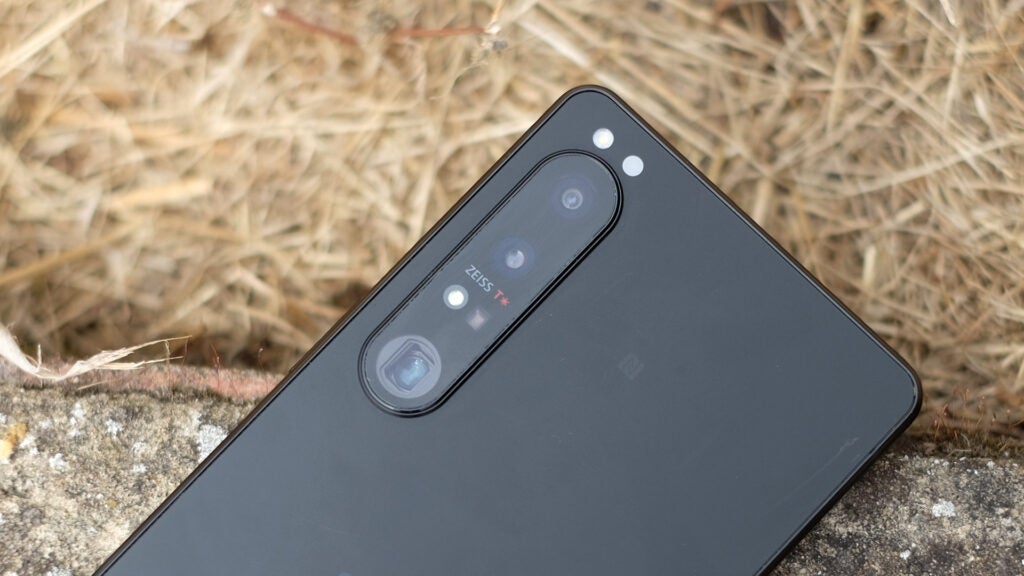
Back to the Xperia IV, just how good are the cameras? The array is a little disappointing, actually. This is partly the result of elevated expectations, but the Sony Xperia 1 IV isn’t the ultimate camera phone it appears to be on paper.
Relatively unintelligent picture processing seems to be to blame, because having reviewed the hundreds of photos I’ve taken with the Sony Xperia 1 IV, all sorts of issues pop up, depending on the type of scene depicted. Sometimes pictures backed by a blue sky display skewed colour that makes skies look unnatural with, for example, an overly green tone.
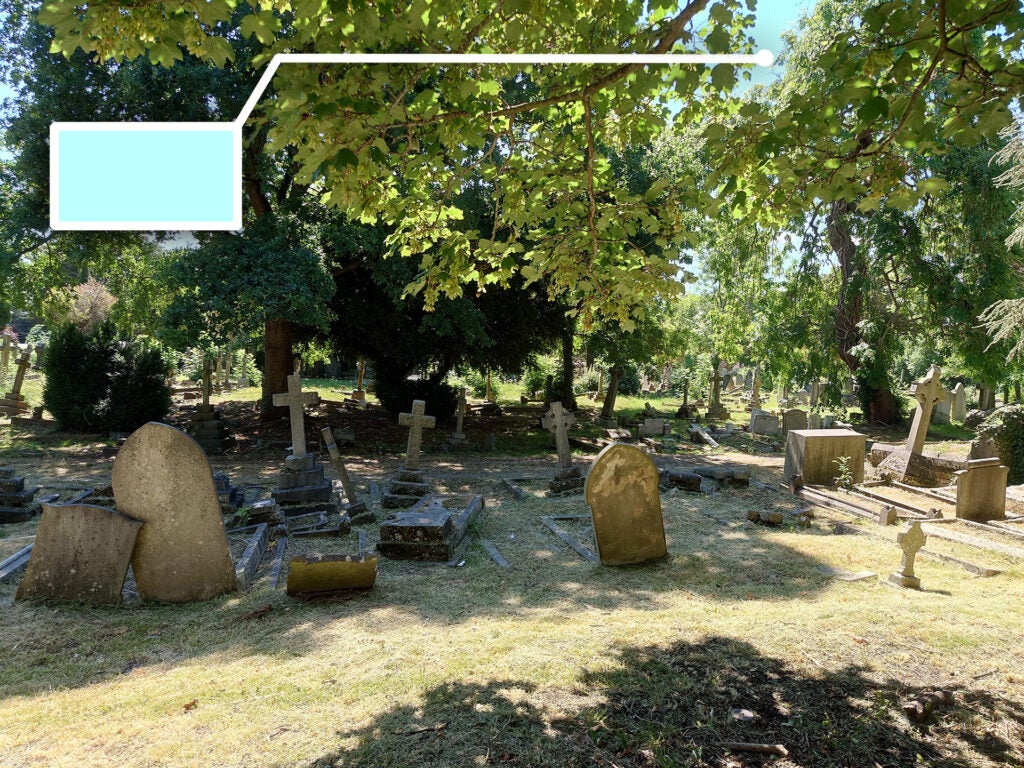
Sometimes, there are blown highlights that shouldn’t be present considering how effective rivals are at avoiding such issues. At other times, the shadow details in a darker subject set against a bright sky aren’t nearly lifted enough. Browns can appear too purple, and shots that don’t have a clear “bright” reference point to use to judge the exposure are routinely too bright, which flattens contrast and makes the image appear lifeless.
Most of these issues, bar overexposure, can be fixed in the edit. I’ve seen some reviews say you need to have experience of photography to get the best out of the Sony Xperia 1 IV. But the phone itself doesn’t help you, because the preview image in the app gives you a flat-out poor account of what the final picture will look like.

Here are some of the Sony Xperia 1 IV photos, alongside some quick and dirty Photoshop edits to show how the software lets down the hardware’s raw abilities:


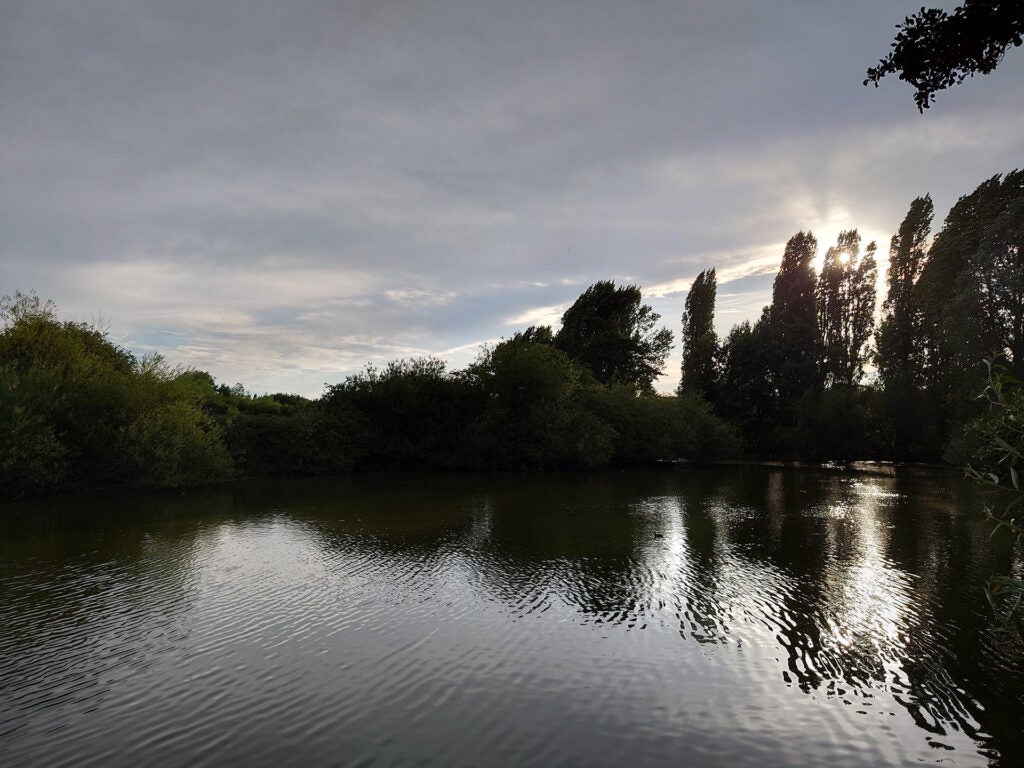
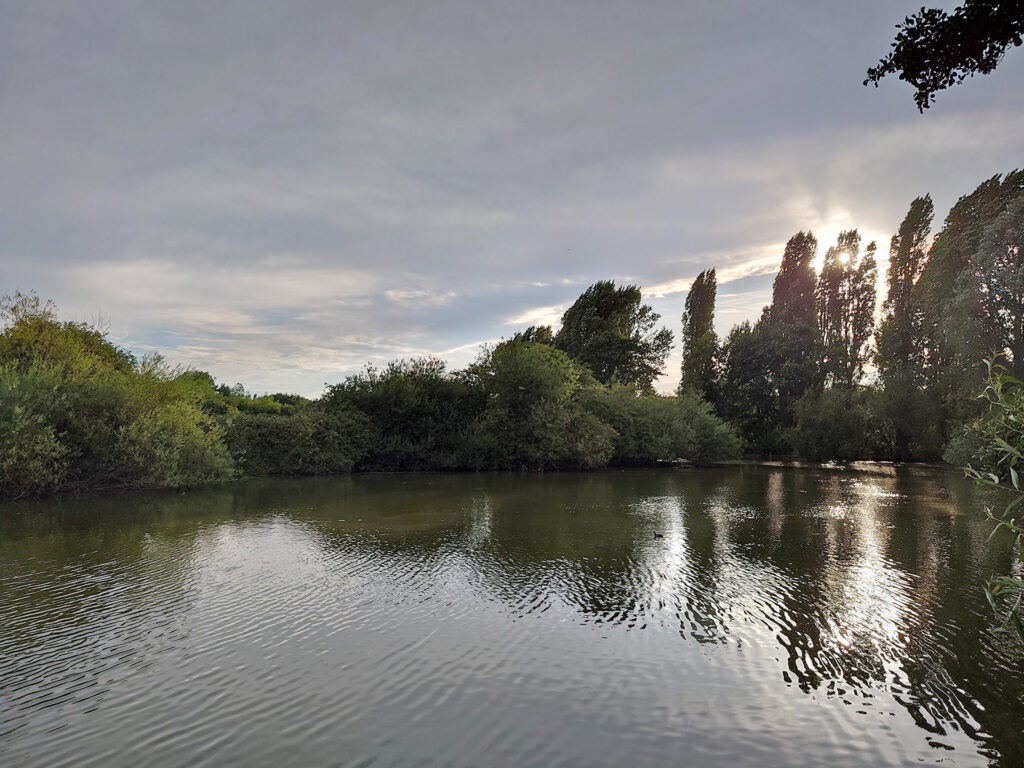


With colour temperature/balance and exposure wandering all over the shop, the Sony Xperia 1 IV’s hit rate is disappointingly low. However, it does have some important high-end capabilities, including a 12-megapixel ultra-wide camera that doesn’t lag far behind the primary in terms of dynamic range and detail.
It’s miles better than the ultra-wide of the much cheaper mid-range phones I’ve used recently. The main camera’s non-pixel-binning approach also leads to very good rendition of tricky, fine textures such as grass and foliage. A more synthetic appearance up-close is common among phones that use pixel binning, although matters have improved in the past year or so. The Pixel 6 phones are a good example of this.

Next, let’s talk about the periscope zoom. The Sony Xperia 1 IV has an optical zoom that can shift from 3.5x to 5.2x. There’s no audible mechanical whirr as this happens, of the kind you’d notice in a conventional motorised zoom; but you can see something moving inside, if you look straight down into the lens.
This is very cool tech for a mobile phone. While I love zooms in phones, and typically end up taking far more images with them than the wide or ultra-wide, the Sony Xperia 1 IV’s periscope zoom falls flat.
Part of this is down to the issues already mentioned. Blown-out areas in pictures are common, as are too-bright images that, while not blown out, appear flat-looking and lifeless. This camera often doesn’t have the headroom for such an increase in exposure, either. It has a small sensor, so attempts to create a brighter picture can lead to the use of a higher ISO, which obliterates fine detail.

There are also some more fundamental issues. The optical zoom’s lens is soft. Intense light sources smear, there’s significant chromatic aberration, and the softness of the image means you can’t get the kind of sharp detail you’d hope to see in such a “lossless” zoom style.
There are hardware compromises, too. While the zoom uses a large 40-megapixel IMX650 sensor, it employs only a relatively small portion of it. This is because in order to match a 5.2x zoom with a 1/1.7-inch sensor, you’d require lens elements far too large to fit in the Sony Xperia 1 IV.
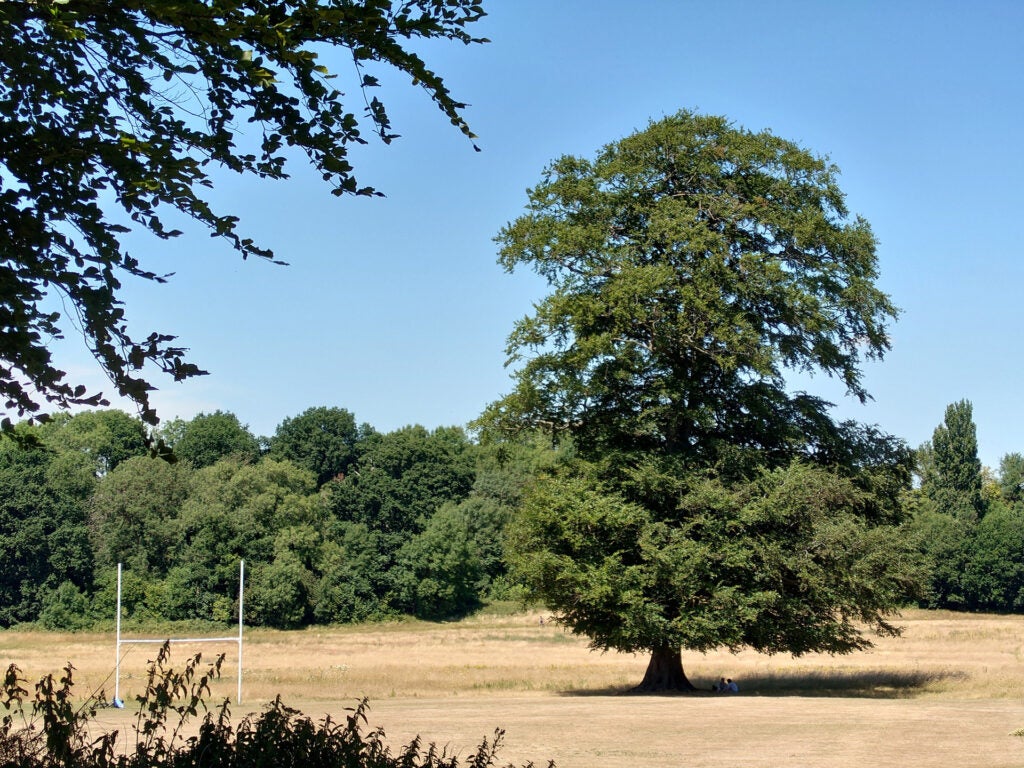

While I wouldn’t recommend the Huawei P50 Pro to many Western buyers, its 3.5x zoom is far better than the 3.5x mode here. It produces sharper, more detailed pictures. As a mobile phone zoom lover, I had more fun using Samsung’s super-zoom phones than this one.
Here’s a comparison:

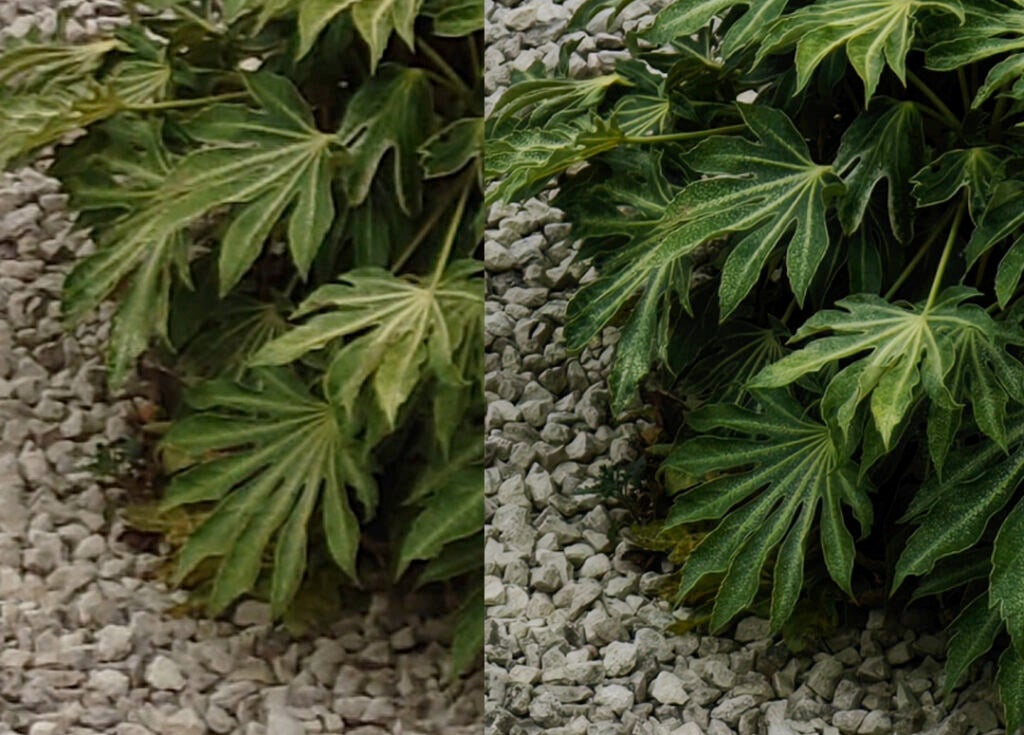
The Sony Xperia 1 IV isn’t that great at night, either. Its low-light images aren’t just beaten by the Huawei P50 Pro, they’re bettered by the OnePlus Nord 2T, too.
Some may argue that Sony has simply avoided the unnatural tone of today’s dedicated night modes. Fair enough – the Xperia doesn’t over-brighten images in the way most do. However, neither does it recover anything like the same level of shadow detail, nor offer the same sharpness as those modes – and it still takes longer than most to capture a shot.
Here’s another comparison:
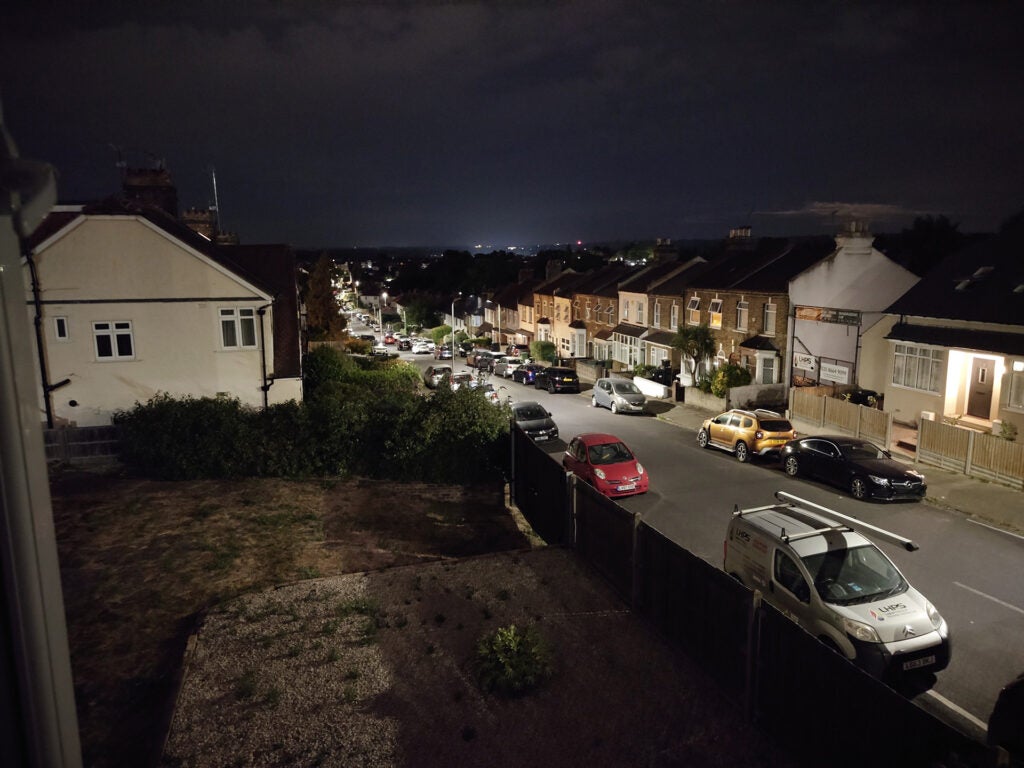
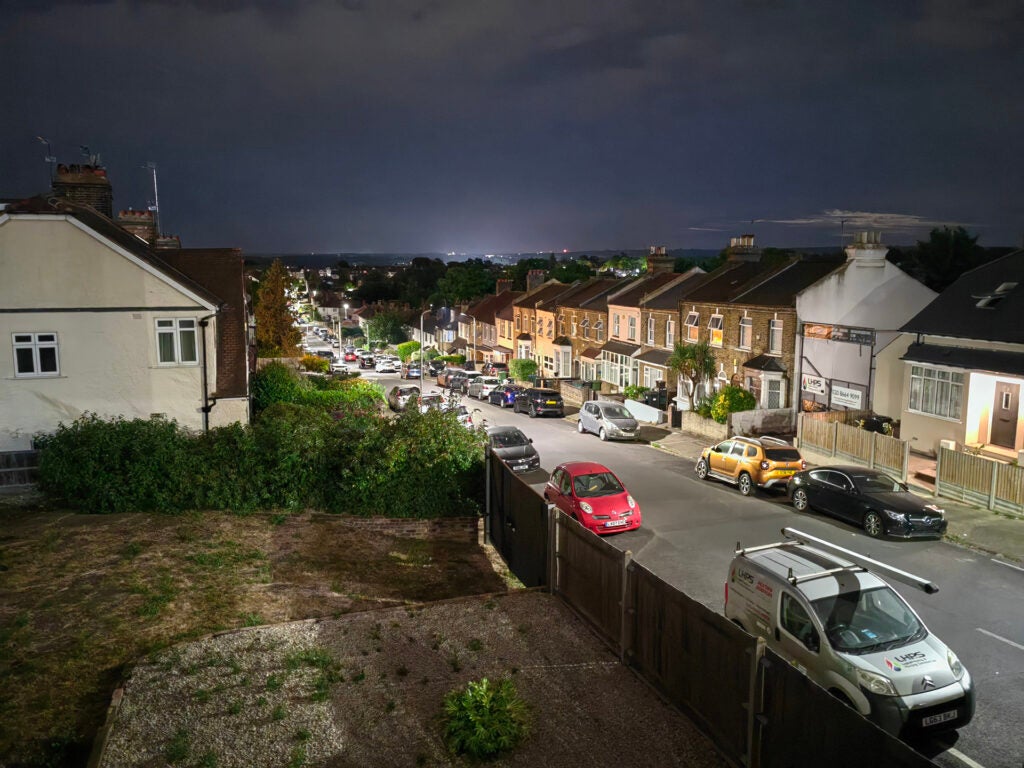
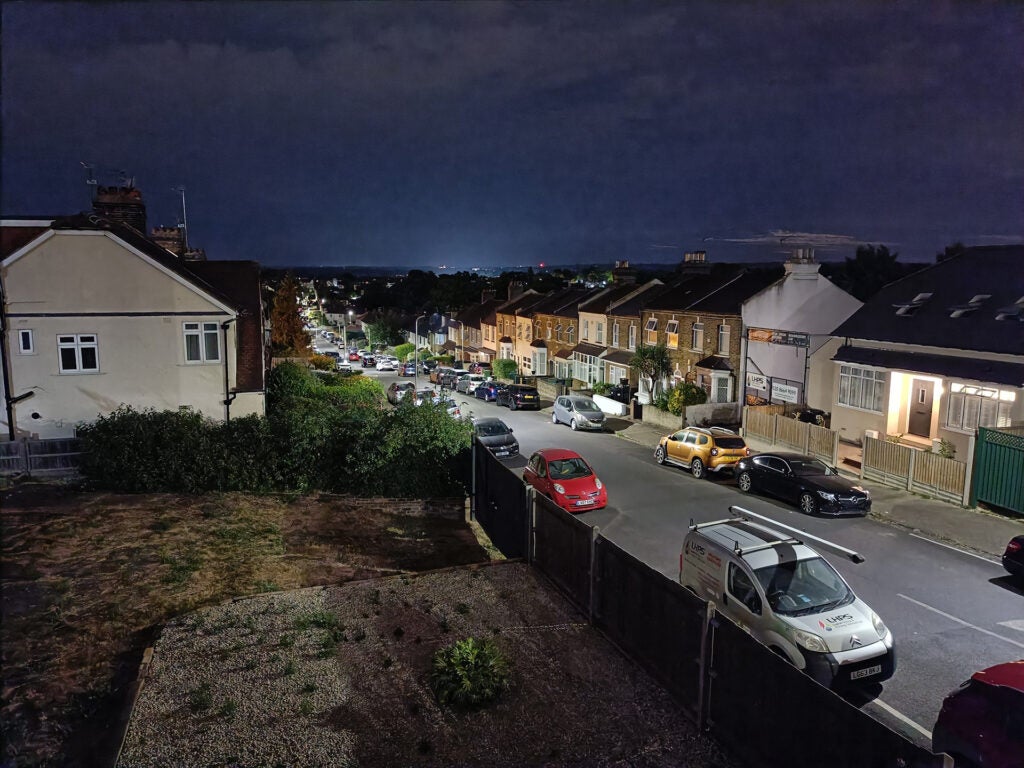
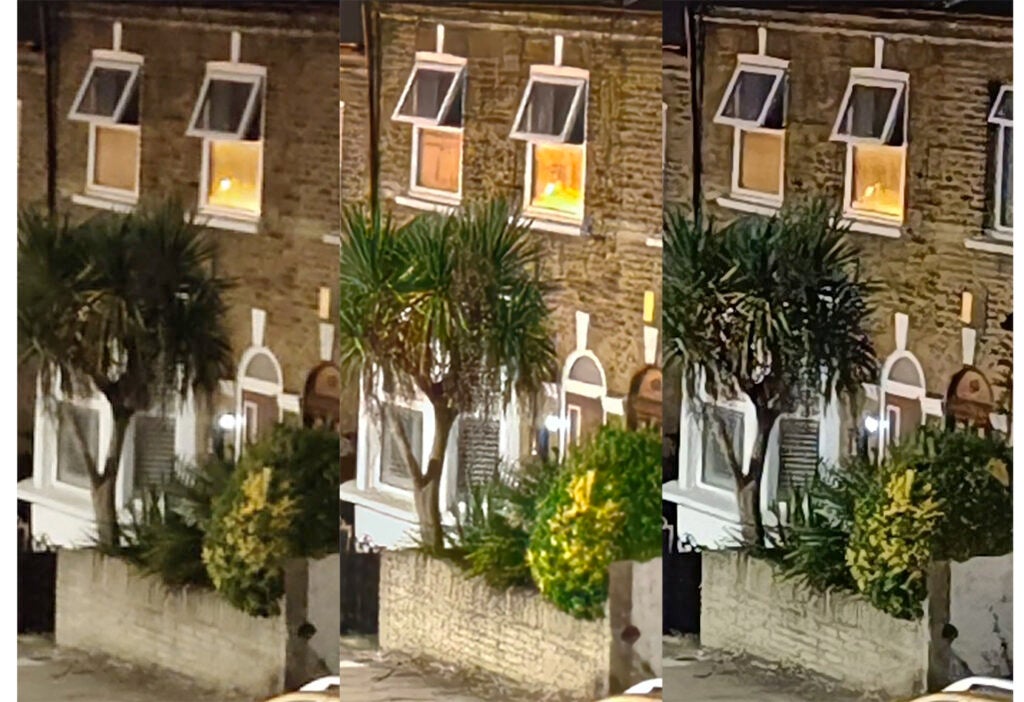
Sony just doesn’t appear to have the software and processing to compete at this level. But it does initially put up a convincing front in another area.
The Sony Xperia 1 IV has an unusual approach to camera software. Its primary app is inspired by Sony’s Alpha cameras. There’s a “basic” mode that feels more like a standard camera app, and “priority” modes that make manual control easier to handle. Sony pairs this software with a physical shutter button that can be half-depressed to initiate focus – as in previous models in the range.
The manual control software is based on the “PASM” standard: Program, Aperture, Shutter Speed, Manual Exposure. But there’s one part that’s been left out here, because the Xperia 1 IV doesn’t have adjustable aperture. The idea is that in each of these you control one core property (two in the case of Program) and let the camera balance the rest.

These modes are mostly useful if you’ll use the Sony Xperia 1 IV on a tripod, because otherwise your creative options are highly limited by what is possible when shooting handheld. And when shooting in bright locations, it’s only aperture priority (the missing one) that offers particularly interesting creative avenues in my opinion.
This is the reason I think the Video Pro app is perhaps bit more interesting. This is the dedicated video capture app, and it again focuses on manual control. The idea is that you set the ISO, the shutter speed – or both – so the Sony Xperia 1 IV doesn’t end up scaling its exposure up and down all the time. This can lead to more professional-looking results, if the scene has the lighting to suit.
You also have much better control over the focus and “zoom” than normal. However, when you zoom enough to flick to one of the other lenses, there’s a jarring jump as the field of view shifts.
The Sony Xperia 1 IV camera array is a mixed affair, but the selfie camera is great. Again, it uses a 12-megapixel sensor. You can use the screen as a warm diffuse flash, but even without it images hold up okay in dingy indoors lighting.
Battery Life
- Solid, but not remarkable
- Slow charging
- 15W wireless charging supported
The Sony Xperia 1 IV has a 5000mAh battery and doesn’t include a charger. Charging speed is poor for a phone at this price, with a maximum draw of 30W.
Exact charging speed may vary between adapters, but I tried one that pulled around 30W according to my power meter. The Sony Xperia 1 IV reached 50% in 37 minutes, displaying 100% charge at the 1hr 48min mark.
I’ve used too many fast-charging Realme, Oppo, OnePlus and Xiaomi phones in the past to not find this kind of charging speed mildly depressing. But it’s true that Samsung and Apple phones are also relatively slow to charge.
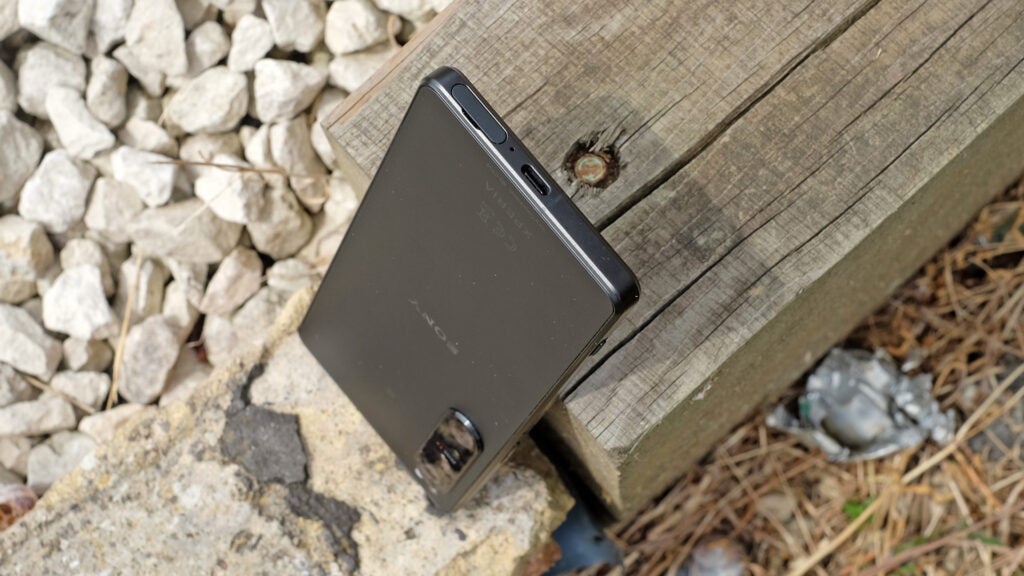
The 5000mAh battery’s stamina is fine, but little more than that. On most days the phone’s battery life is in single figures by bedtime, and while I’m a fairly heavy user, I don’t think this is going to be anything close to a two-day-use phone for anyone.
Perhaps we should be grateful for the 5000mAh capacity, though. If it had 4500mAh, we’d likely be looking at a device that just didn’t last long enough. Real-world stamina here is roughly comparable with other recent top-end phones.
You can use a wireless Qi charger to power up the Sony Xperia 1 IV at up to 15W. If you work from home or in an office, using one of these is a way for heavy users to avoid any battery life frustrations.
Latest deals
Should you buy it?
You want all the bells and whistles:
Sony offers a different kind of top-end Android phone, one that rejects trends that have upset many over the years. It has a headphone jack, expandable memory and some features not seen elsewhere – such as almost over-the-top manual camera control software.
You want to game on-the-go:
This is an extremely expensive phone that becomes hot a lot of the time. And, despite being dressed up like a Sony mirrorless camera, most of the pictures it produces need some editing to look their best.
Final Thoughts
Sony hasn’t changed direction with the Sony Xperia 1 IV, but it still offers several features you don’t get elsewhere. It’s a top-tier phone with a headphone jack, expandable memory and an unusual take on what a smartphone camera should feel like.
It has an optical zoom lens and multiple apps that focus on manual control for stills and video. While other phones offer the same controls, the Sony Xperia IV spreads them out to make them easier to use – much as they may seem intimidating at first.
However, actual image quality is mixed. Image processing lags behind the best, the preview image in the app is poor, and the limited sharpness of the zoom lens limits the appeal of the super-advanced sounding zoom.
The Sony Xperia 1 IV also suffers overheating issues and costs a small fortune. While it’s a great phone, you should have a limited tolerance for such problems at this price.
The newer Sony Xperia 1 V fixes some of the main complaints of the IV, including that terrible thermal performance and image processing, but it’s also one of (if not the) most expensive candybar phones around at £1,299/$1,399.
How we test
We test every mobile phone we review thoroughly. We use industry standard tests to compare features properly and we use the phone as our main device over the review period. We’ll always tell you what we find and we never, ever, accept money to review a product.
Used as our main handset during test period
Camera tested in variety of situations with all modes
Tested with synthetic benchmarks and real world use
FAQs
The Sony Xperia 1 IV offers excellent IP68 water resistance, meaning it’s designed to handle submersion in water at a depth of 1.5m.
Unlike most top-end phones, the Sony Xperia 1 IV features a classic 3.5mm headphone jack.
The phone only has one SIM slot, but the tray does have space for a microSD card.
Trusted Reviews test data
Full specs
Sustainability
TrustedReviews’ holds the fact that global warming is not a myth as a core value and will continuously endeavor to help protect our planet from harm in its business practices.
As part of this mission, whenever we review a product we send the company a series of questions to help us gauge and make transparent the impact the device has on the environment.
We currently haven’t received answers to the questions on this product, but will update this page the moment we do. You can see a detailed breakdown of the questions we ask and why in our sustainability info page.
The post Sony Xperia 1 IV appeared first on Trusted Reviews.
Source Trusted Reviews ,Home Appliances Reviews

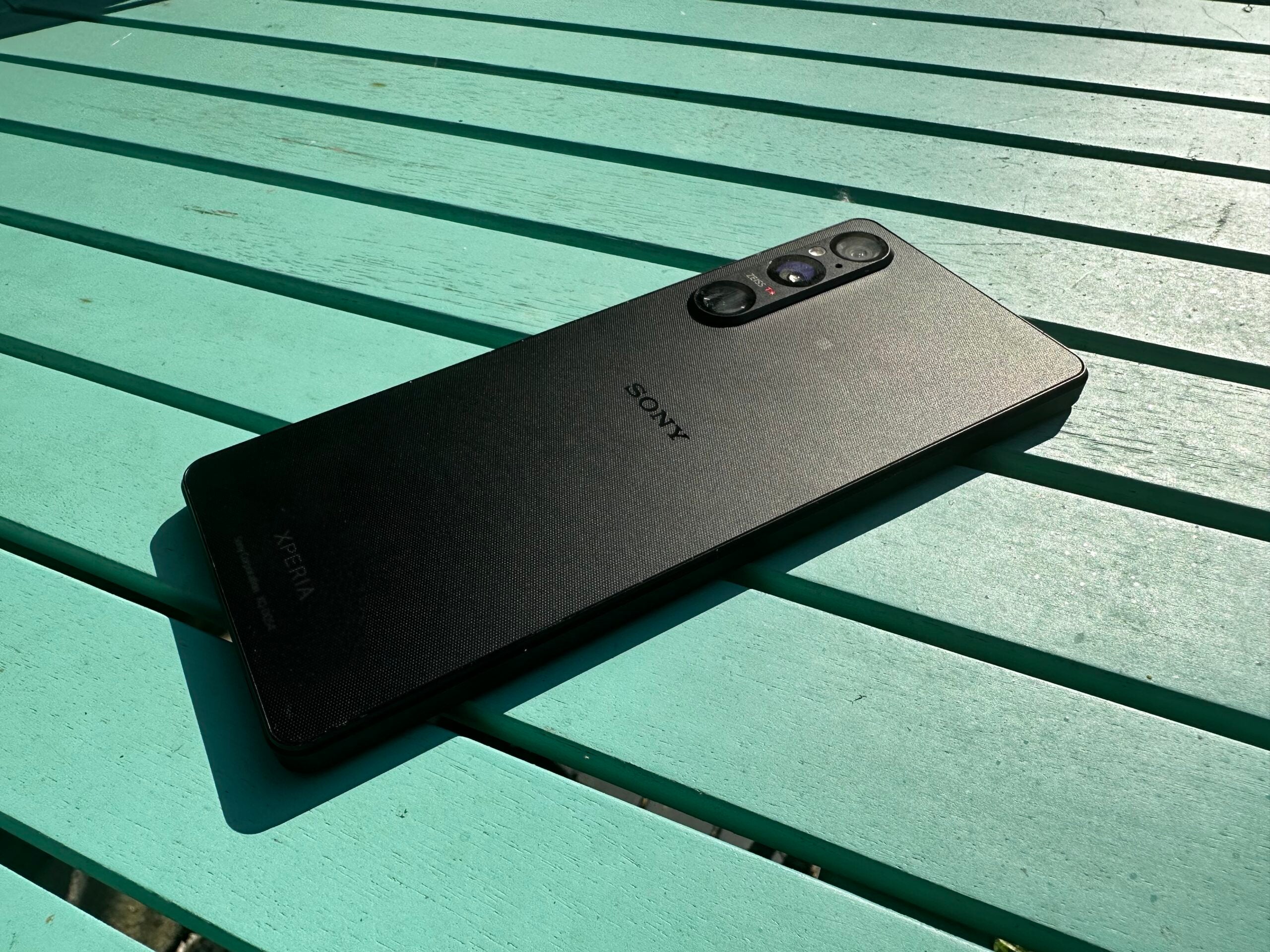

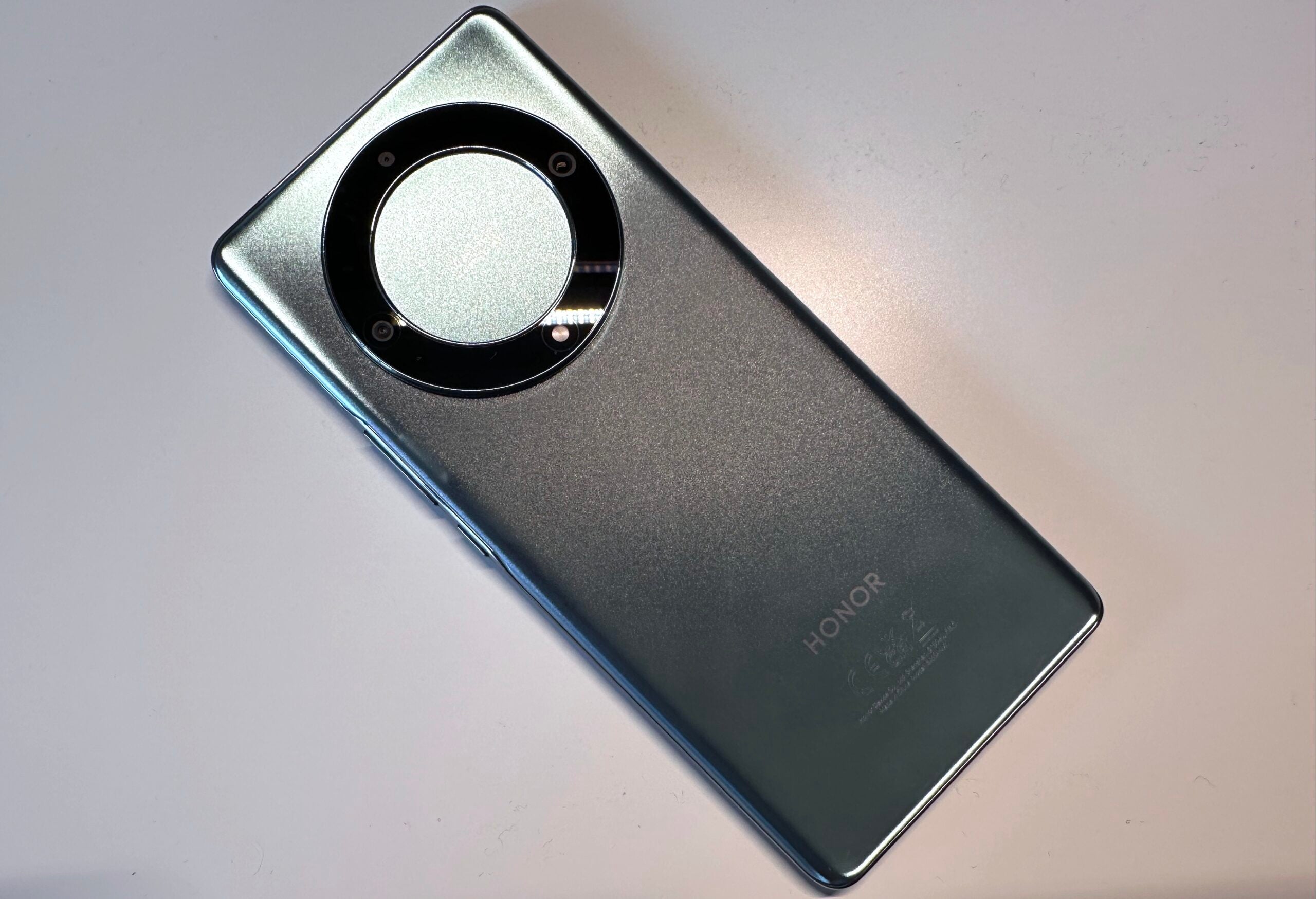
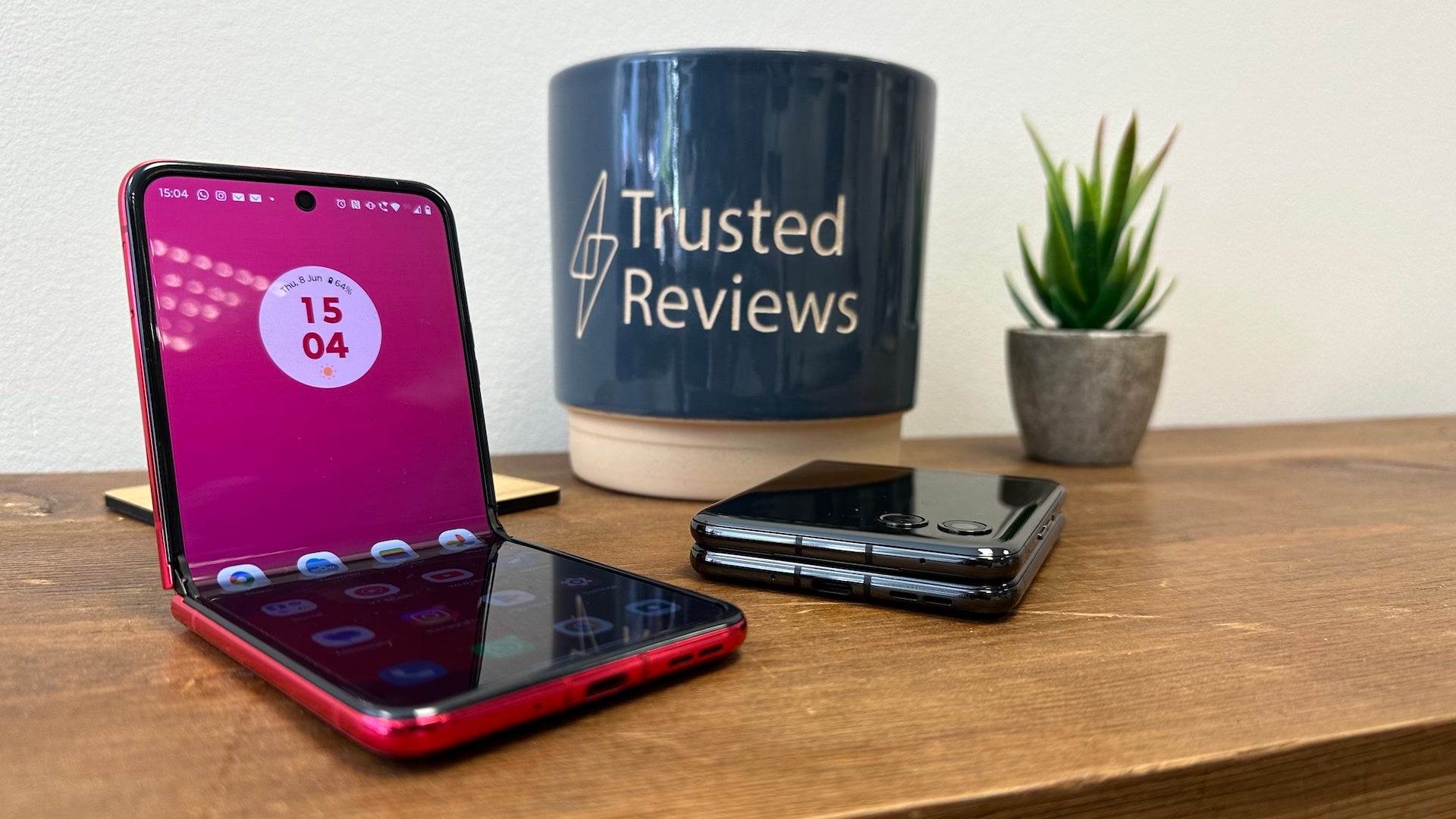

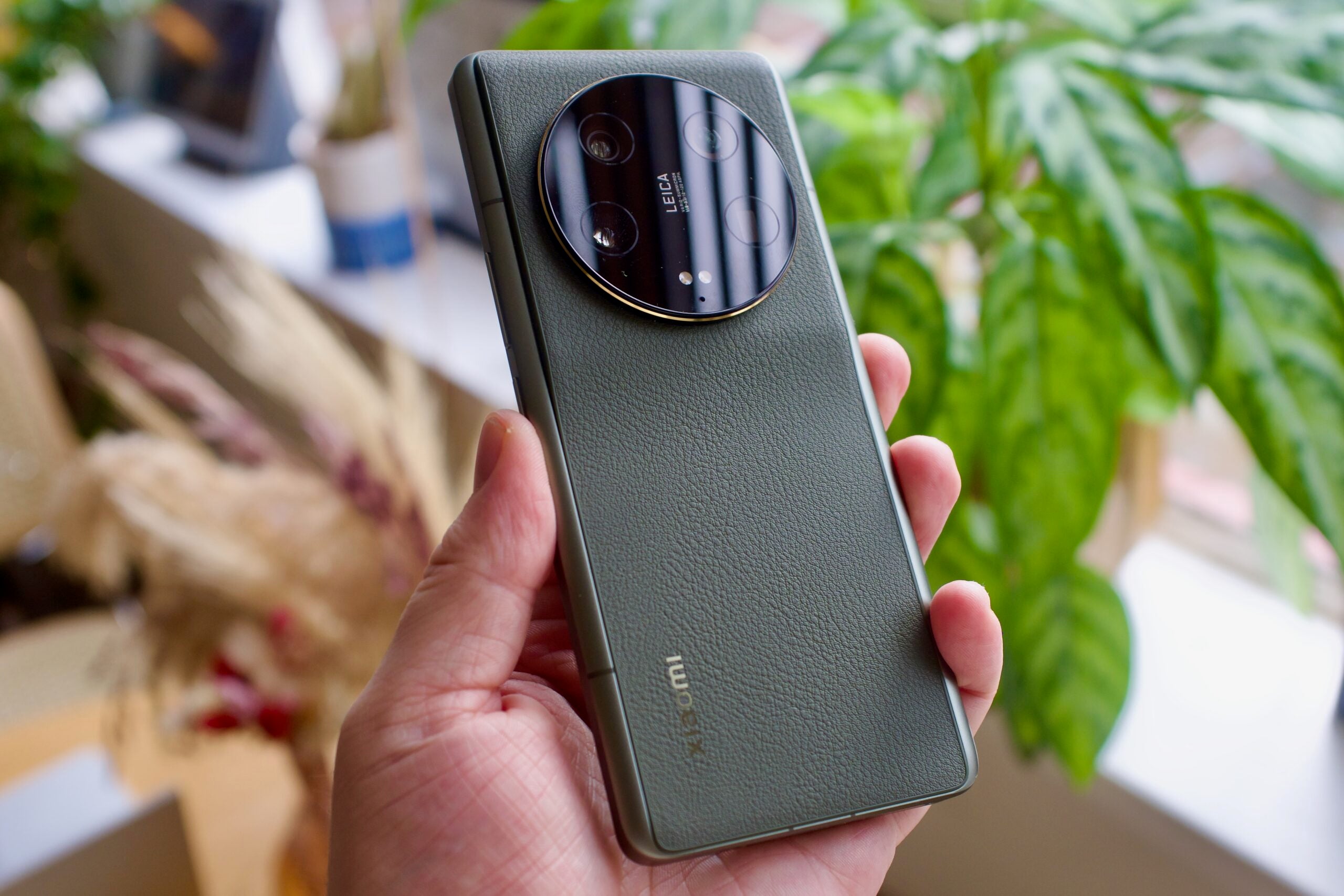
No comments